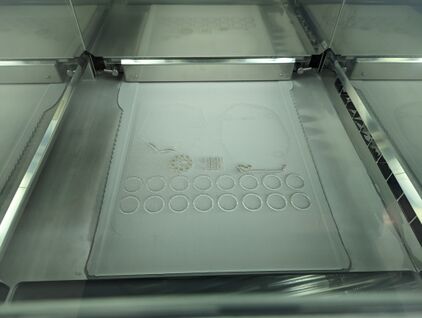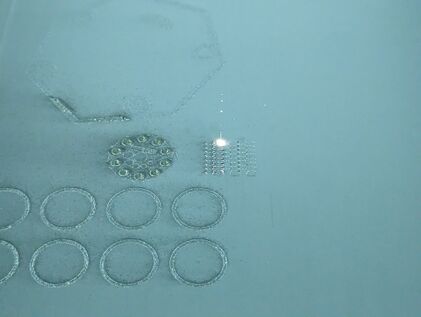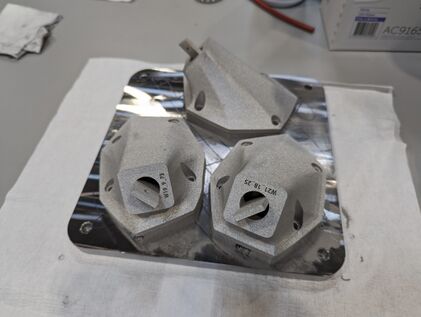Powder Bed Fusion
Process description
Powder bed fusion is primarily used to build metal parts, although other materials may be used. Powder bed fusion works by spreading a layer of powdered material over the entire print surface and then using a laser to selectively melt sections together. Another layer is then added on top of the last and the process is repeated until the part is complete. After the part is built, it must be thoroughly cleaned and scrubbed to remove excess powder.
Strengths & Weaknesses
The benefits of Powder Bed Fusion:
- Built in support system: The excess powder supports the print so there's no need to add printed supports, enabling the building of more complex geometries while maintaining consistent surface finish throughout the part
- Small footprint: Powder bed fusion machines frequently have a small footprint, and can be added into most workplaces. This allows for organizations to create metal prototypes in house.
The drawbacks of Powder Bed Fusion:
- High energy use: Melting metal with a laser takes significant energy.
- Surface finish: Powder bed fusion generally has a rough surface finish.
- Material properties: This process creates a lot of grain boundaries creating a weaker structure compared to parts cast from the same material.
Part Property Ranges
| Worst | Best | |
|---|---|---|
| volume X/Y/Z (mm) | 250/250/325 | 800/400/500 |
| resolution (mm) | .1 | .06 |
| layer height (um) | 120 | 20 |
| price ($) |
Powder bed fusion printers are on the more expensive side and require quotes from individual companies. Our research indicates these machines are on the order of $1,600,000.
Technologies
There are a number of specific technologies that can vastly change to capabilities of a printer.
Selective laser sintering (SLS) this is the general term for most non metal powder bed fusion technologies. the title refers to the fact that the heat source only adds enough energy to fuse the powder instead of fully melting it. this gives an alternative for materials that material extrusion might struggle to print such as nylon or softer thermoplastics.
selective laser melting (SLM) in contrast to sls, slm refers to most processes of metal powder bed fusion. the energy added completely melted making the internal structure more homogenous. this technique allows for fully metal prototypes relatively easily. these parts will require supports to prevent warping due to temperature changes


